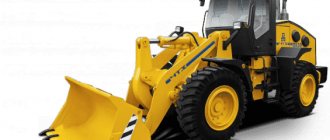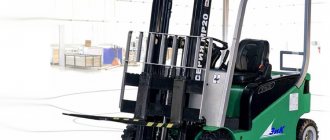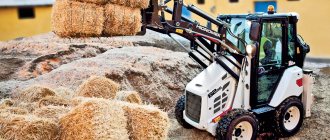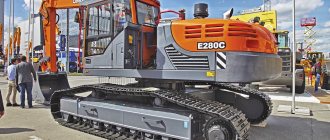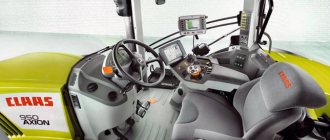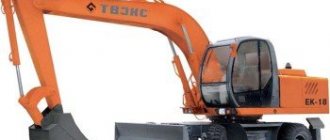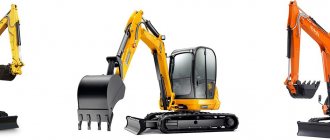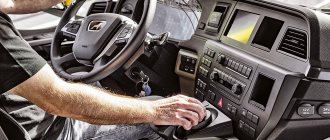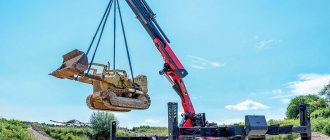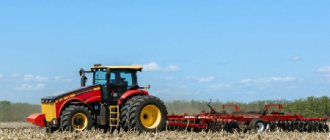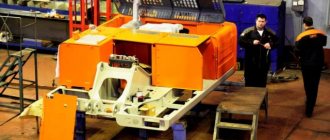TSM SSL 709 is a Japanese all-terrain mini front loader. This model is developed taking into account the requirements approved by international norms and standards. The equipment meets the needs of the most demanding users, as confirmed by factory tests and many years of practice. The device in question is designed from time-tested Japanese components. At the same time, TCM used innovative components in its machine, which indicates the high technology of the product. This article discusses the main capabilities of the TCM SSL 709 front loader, its advantages, characteristics, cost and operating features.
Purpose
The TSM SSL 709 mini loader is a loader in the professional segment, and is one of the best in its price category. This can be seen judging by the functionality of the machine. The equipment is adapted for construction and municipal tasks, as well as agricultural work. In particular, the SSL 709 model can be used for cultivating and harrowing the soil, as well as mowing vegetation, unnecessary weeds and shrubs. In addition, the machine is also suitable for earth-moving operations. In public utilities, the potential of this loader can be revealed in operations related to the cleaning of territories and squares, highways, public places, etc. Alternatively, this device is perfect for pothole repair of roads, or road construction, as well as construction or destruction buildings and structures subject to demolition. TCM SSL 709 is considered as a multi-purpose tool for loading and transporting materials. All of the above tasks can be accomplished thanks to the support of attachments, which are presented below in the article.
Attachments
- A snow blade is a device for working in winter. The standard version is equipped with a mechanical drive, which means that the blade angle can be adjusted manually. In a more advanced, automatic version, the blade is hydraulically driven. In this case, there is no need to leave the cab, since the tilt angle is adjusted using a lever from the operator’s cab.
- Pallet forks are a device with the capabilities of a forklift. Used to handle cargo that is usually placed exclusively on pallets. The width of the pallet forks can be adjusted based on the shape and dimensions of the cargo. Depending on the modification, forks with different load capacities are distinguished.
- A lifting telescopic boom is a special tool with a lifting capacity of up to 2 tons, depending on the design, designed for moving cargo in the air. This is a very convenient option in conditions where it is not possible to move the load across the surface due to the presence of obstacles. In order for the boom crane hook to rotate in any plane, the equipment is equipped with a special hinge support.
- Log grabber is equipment used as a means to grab cylindrical objects - piles, poles, pipes and logs. Thanks to flexible hydraulic hoses, the log grabber functions without interruption, and at the same time is highly resistant to high pressure in the hydraulic system. The maximum lifting capacity of the hydraulic grab is 5 tons.
- Front bucket – attachment for front installation on a loader. The range of capabilities of the bucket is the main range of work, including cleaning and transporting snow and debris from one place to another. In terms of its capabilities, it is definitely inferior to specialized buckets.
- A snow removal bucket is a specialized version of a standard bucket, designed for removing dry and wet snow, as well as compacted and icy snowdrifts. The material of this bucket is made of stainless steel, which indicates high resistance to damage. We also note good anti-corrosion protection. Thanks to this, the bucket will last significantly longer.
- Bulldozer blade is an attachment with the capabilities of a mini-bulldozer. At the same time, the loader itself is not at all limited in functionality. In this case, it is adapted for transporting soil, snow, sand and other bulk materials. The bulldozer blade has a rotating function, that is, the angle of rotation of the blade can be adjusted relative to the front axle of the loader.
- A two-jaw bucket is a device with a complex design consisting of two working “jaws” that interlock with each other. This is necessary to ensure that the captured load is inside the bucket and does not fall out. Interestingly, the jaws themselves close with each other through a hydraulic drive, that is, using a lever from the operator’s cabin.
- A brush is a utility equipment for removing dust, debris, leaves or freshly fallen snow. This device is useful in cases where quick and effective cleaning of large volumes of roads and sidewalks from debris is required, including unnecessary construction waste - sand, soil, crushed stone, etc. Depending on the modification, road and rotary brushes are distinguished, as well as industrial brushes with a bunker.
- A fork with a clamp is an agricultural option for working with fibrous materials. In particular, we are talking about flax fiber, hay, loosened haylage, mown grass and other similar materials with a density of about 800 kg per 1 cubic meter. The best option is replaceable agricultural forks mounted on a loader. They are suitable for transporting hay and straw.
- Agricultural forks with grip are attachments that are improved compared to the above option. It has a lifting capacity of up to 4 tons and is equipped with a special gripper that allows you to grab mown grass (or any other fibrous material with a density of 800 kg per 1 cubic meter). In addition, the grip prevents the cargo from accidentally spilling out during transportation.
- The cradle is a convenient device for working at heights. It is a lifting platform that lifts the operator to a certain height. The wide doorway provides easy access to the platform. Among the work carried out using a lifting platform, one can highlight the installation or pulling of high-voltage wires, lighting lamps, fire sensors, painting of ceilings, finishing of facades, as well as other types of work performed at height - both outside and inside premises and structures.
- Bucket adapter is special equipment for reinforced mounting of heavy attachments. Essentially, it is an additional accessory for securing heavy-duty buckets more firmly.
- The bucket blade is an additional attribute for a snow removal bucket that can be used to remove snowdrifts more efficiently and quickly. In particular, the blade of the bucket allows you to remove hard and compacted snowdrifts along with ice.
Device Features
- The front-end mini loader TSM SSL 709 is equipped with a 33 hp engine. s., and the torque is 155 N/m. This is enough to unlock the potential of all working and mobile devices. In addition, there is enough power to 100% evaluate the capabilities of the wheeled chassis. The engine is equipped with liquid cooling, which provides effective control over the parameters of the internal combustion engine to prevent overheating. In addition, the package includes a pre-heater, thanks to which there will be no problems starting the engine in cold weather. In addition, there is no need to wait until the engine warms up and immediately start driving.
- The machine is equipped with rubber wheel tires with metal rims. The deep tread allows you to overcome obstacles such as country roads and relief hills. That is, it is possible to travel not only on asphalt roads. Good geometric cross-country ability is achieved, among other things, thanks to the short wheelbase, minimal body overhangs and high ground clearance. We will also add decent maneuverability along with a small turning radius - this ensures the ability to avoid various obstacles, including due to good feedback.
- Quite heavy wheels make the loader heavier, and thereby increase its load capacity. It weighs 1000 kg, and the maximum speed of the machine reaches 12 km/h. The wheelbase volume is 930 mm.
- The TCM SSL 709 is primarily a mini loader, one of the most compact among front loaders. It is equipped with a small single-seat cabin with a wide glass area for good visibility. Protection is provided by side metal mesh, which will be needed in case the forklift overturns. At the same time, the operator will remain protected. In addition, this is facilitated by the rigid frame of the cabin. The interior of the cabin is organized in a minimalist style, without innovative or advanced solutions. But the level of ergonomics is excellent. Note the well-placed levers and switches. The steering column and seat can be adjusted to your liking, and the heating system can also be adjusted, which is very useful in the cold season.
- Convenient organization of the engine compartment indicates good maintainability of the product, as well as low cost of ownership due to cheaper components than competitors. Air and fuel filters are installed in such a way that they can be quickly removed and replaced without using special tools. The same applies to components and assemblies, as well as components of the power plant and gearbox.
Maintenance of TCM loaders
MAINTENANCE OF TCM AUTO-LOADERS (TSM)
Maintenance 3 for TCM forklifts, Maintenance 4.8 for TCM forklifts, 6 for TCM forklifts, 10 annual maintenance for TCM forklifts, selective maintenance* for TCM forklifts )
Maintenance of TCM loaders (TCM) with a load capacity of 1.5-5.0 t
LLC "SkladTekhResurs" REPAIR, SERVICE, MAINTENANCE OF FORKLIFTS www . stresyrs . ru
Maintenance of forklifts with a load capacity of 1.5-5.0 tons (diesel and gas/petrol)
| No. | Name of works | Completion mark | ||||||||
| TO-3 | TO-4.8 | TO-6 | TO-10 | Maintenance-selective* | ||||||
| Every 250 m/h (quarterly) | Every 500 m/h (semi-annual) | Every 1000 m/h (annual) | Every 2000 m/h (biennial) | *Items are marked by the customer | ||||||
| 1 | Replacing the TCM forklift air filter (TCM) | * | * | * | ||||||
| 2 | Changing the oil in the drive axle of a TCM loader (TCM) | * | ||||||||
| 3 | Changing the oil in the automatic transmission/manual transmission of a TCM loader | * | * | * | ||||||
| 4 | Changing the oil in the hydraulic system of a TCM loader (TCM) | * | ||||||||
| 5 | Replacing the TCM forklift engine oil and filter | * | * | * | * | |||||
| 6 | Replacing the TCM forklift cooling system fluid | * | ||||||||
| 7 | Replacing the TCM forklift fuel filter (TCM) | * | * | * | * | |||||
| 8 | Replacing filters in the hydraulic system of a TCM loader (TCM) | * | ||||||||
| 9 | Replacing the automatic transmission/manual transmission filter of a TCM forklift (TCM) | * | * | * | ||||||
| 10 | Cleaning the external surface of the TCM forklift radiator (TCM) | * | ||||||||
| 11 | Cleaning the TCM forklift air filter | * | ||||||||
| 12 | Cleaning the strainer of the TCM loader injection pump (TCM) | * | * | * | * | |||||
| 13 | Checking leakage of operating fluids of the TCM loader (TCM) | * | * | * | * | |||||
| 14 | Checking the condition of the hose hose and pipes of the TCM loader (TCM) | * | * | * | * | |||||
| 15 | Checking the cold start system of the TCM forklift (TCM) | * | * | * | * | |||||
| 16 | Checking the injection molding machine and the condition of the fuel lines of the TCM loader (TCM) | * | * | * | * | |||||
| 17 | Checking the condition of the battery and generator of the TCM forklift (TCM) | * | * | * | * | |||||
| 18 | Checking the wiring and electrical equipment of the TCM loader (TCM) | * | * | * | * | |||||
| 19 | Checking the TCM forklift cooling system | * | * | * | * | |||||
| 20 | Checking the oil level in the TCM loader engine (TCM) | |||||||||
| 21 | Checking the oil level in the TCM loader drive axle (TCM) | * | ||||||||
| 22 | Checking the oil level in the automatic transmission/manual transmission of a TCM loader | * | ||||||||
| 23 | Checking the oil level in the TCM loader hydraulic system (TCM) | * | * | * | ||||||
| 24 | Checking (adjusting) the brake system of the TCM loader (TCM) | * | * | * | * | |||||
| 25 | Checking (adjusting) the TCM (TCM) loader clutch drive | * | * | * | * | |||||
| 26 | Checking (adjusting) and lubrication of the TCM loader lifting machine (TCM) | * | * | * | * | |||||
| 27 | Checking (adjusting) and lubrication of attachments* of the TCM loader | * | * | * | * | |||||
| 28 | Checking (pulling) the fastenings of components and assemblies of the TCM loader (TCM) | * | * | * | * | |||||
| 29 | Checking (adjusting) thermal clearances of the timing belt of the TCM loader (TCM) | * | ||||||||
| 30 | Checking (adjusting) the tension of the drive belts of the TCM loader (TCM) | * | * | * | * | |||||
| 31 | Checking (adjusting) TCM (TCM) loader wheel bearings | * | * | |||||||
| 32 | Pulling the fastenings of the lifting mechanism of the TCM loader (TCM) | * | * | * | * | |||||
| 33 | Pulling the fastenings of the drive and steering axles of the TCM loader (TCM) | * | * | * | * | |||||
| 34 | Adjusting TCM Truck Tilt Cylinders | * | * | * | * | |||||
| 35 | Lubrication of the machine in accordance with the TCM loader lubrication chart (TCM) | * | * | * | * | |||||
| 36 | Removing wheels, checking brake drums and pads (cleaning) TCM loader | * | ||||||||
| 37 | Comprehensive (running) check of the operation of the TCM loader machine (TCM) | * | * | * | * | |||||
| № | No. TO and Qty m/h | Maintenance cost in rubles | ||||||||
| 1 | TO-3 (every 250 m/h) (quarterly) TCM loader (TCM) | RUB 9,890 — 13,990 rub. | ||||||||
| 2 | TO-4 (500 m/h) (six-monthly) TCM loader (TSM) | RUB 15,790 — 18,390 rub. | ||||||||
| 3 | TO-6 (1000 m/h) (annual) TCM loader (TSM) | RUB 18,890 — 22,880 rub. | ||||||||
| 4 | TO-10 (2000 m/h) (two-year old) TCM loader (TSM) | RUR 25,890 — 30,950 rub. | ||||||||
| 5 | Maintenance-Selective* TCM (TCM) | |||||||||
Does your TCM forklift require maintenance? Call!
- Maintenance of TCM FHD15/18T3Z loaders
- Maintenance of TCM FG10/15/18N18T loaders
Specifications
- Load capacity – 1000 kg
- Engine brand – V2403-M
- Engine type – diesel, 4 cylinders, 33 l. With.
- Rotation speed – 2400 rpm
- Torque – 156 N/m
- Cylinder diameter – 87 mm
- Piston stroke – 102 mm
- Wheelbase volume – 930 mm
- Dimensions, mm: Length – 3090, Width – 1535, Height – 1940 mm
- Battery parameters: 12 V; 64 Ah
- Disc brakes – yes
- Unloading height – 2200 mm
- Tire parameters – rubber, 10-16.5-6PR
- Front track – 1250 mm
- Rear track – 1250 mm
- Climbing depth – 30 degrees
- Turning radius width – 2300 mm
- Seat – yes
- The capacity of the working body is 0.35 cubic meters. m.
- Bucket cutting edge – 1670 mm (width)
- The type of standard working body is a bucket.
The power unit of the loader is a 4-cylinder Kubota V2403-M diesel engine with a working volume of 2,434 cm3 and a power of 46 hp. Maximum torque of 156 Nm is achieved at 1600 rpm. During operation, the low noise level of the engine is noteworthy.
There are anti-slip plates at the entrance to the cabin, and a special rough lining is glued on. The location of the handrails also does not raise any questions. The comfortable seat has several adjustments and is equipped with a seat belt. The control algorithm is the same as in the TCM SSL 711 model - the movements of the loader itself are controlled by high levers to the right and left of the operator, and the boom and bucket rotation are controlled by foot pedals. When the two levers are moved away from you, the loader will begin to move forward; If you move the left lever forward and the right lever back, the car will start turning to the right.
When you press the front half of one of the pedals, the bucket tilts forward; when you press the back half of the pedal, it tilts back. The second pedal, which controls the movement of the lifting boom, is activated in the same way. This time, it didn’t take much getting used to this algorithm of movements, since during the test several months ago I managed to master it quite well. One of the “advantages” of high levers, as opposed to joysticks, is high reliability. If necessary, the speed of movement of the loader or actuators can be adjusted using a lever located to the right of the operator, changing engine speed and hydraulic pump performance.
At the top, above the front window, slightly to the left and right relative to the longitudinal axis of the loader, there are instrument panels and switches. The instruments most in demand during operation are present here - engine temperature gauge, fuel gauge, hour meter and warning lights related to engine and hydraulic operation. Switches that control lights, windshield wipers, turn signals and cabin heating are equipped with easy-to-read pictograms and have optimal dimensions for such equipment. Wide sliding windows are especially convenient in the summer. The ventilation and heating system is equipped with rotating flaps to regulate the air flow and has a de-icer function.
Outside the cab, front and rear, there are halogen headlights, which significantly simplify work in low-light conditions.
The control drive is equipped with an automatic bucket leveling system, which allows you to avoid unnecessary fatigue during work. The buyer also has the opportunity to order a large number of replacement equipment: a drill, buckets of various types, a rotary snow blower, a sweeper, a vacuum cleaner, a blade, a forklift, a pinion crane installation, a concrete mixer, a jaw gripper for logs and a number of other devices. The interchangeable working tool is hung using a quick attachment system with two locking handles. For some tools, a special adapter is provided.
When inspecting the units in the engine compartment, simply fold back the top cover and open the large rear door. Filters, battery, and engine and hydraulic radiators are conveniently located for inspection and maintenance. For a deeper study of the hydraulic system and engine, you can tilt the loader cabin. It should also be noted that the machine is adaptable to servicing in the absence of an inspection hole - to change the oil, there is a drain pipe in the engine sump, onto which a hose is attached that is led outside the engine compartment.
A hands-on test of the two forklifts revealed little difference in design or noise levels. The main differences lie internally and in technical indicators. Based on them, you can select a machine for a certain intensity of operation or perform the necessary tasks. Improved safety features, attractive design and commendable ease of maintenance allow TCM to find its way into the hearts of new customers with a variety of construction or municipal maintenance needs.
Engine designation – Kubota V2403-M Engine type – 4-cylinder, diesel Displacement – 2,434 cm3 Rated power – 46 hp (33.5 kW) / 2,400 rpm Maximum torque - 156 Nm / 1,600 rpm Drive - 4 drive wheels Maximum speed: Forward - 12 km/h | Backward - 12 km/h Brakes - HST motor shaft braking; disc brakes in an oil bath Steering - skid steer system - braking with wheels on one side Turning radius: forward (bucket angle) - 2,300 mm | back – 1,380 mm Climbability with load – 17° | no load - 30° Wheelbase - 930 mm Track (front/rear) - 1,250/ 1,250 mm Front overhang (bucket on ground) - 1,300 mm Rear overhang - 860 mm Ground clearance - 185 mm Length with standard bucket - 3 090 mm Width (bucket) – 1,670 mm Total cabin height – 2,040 mm Bucket lifting time (with rated load) – 4.9 s Bucket unloading cycle time – 2.8 s Empty bucket lowering time – 3.0 s Operating weight – 2,790 kg Bucket volume (with heap) – 0.35 m3 Maximum bucket reach when unloading – 610 mm Maximum unloading angle – 40° Maximum unloading height – 2,200 mm Nominal load capacity – 690 kg Tipping load – 1,380 kg Height of the coupling device – 300 mm Maximum traction force (with rated load) – 24.5 kN Fuel tank capacity – 40 l Hydraulic system tank capacity – 24 l Battery – 12V; 64Ah Tires (front and rear): 10-16.5-6PR
